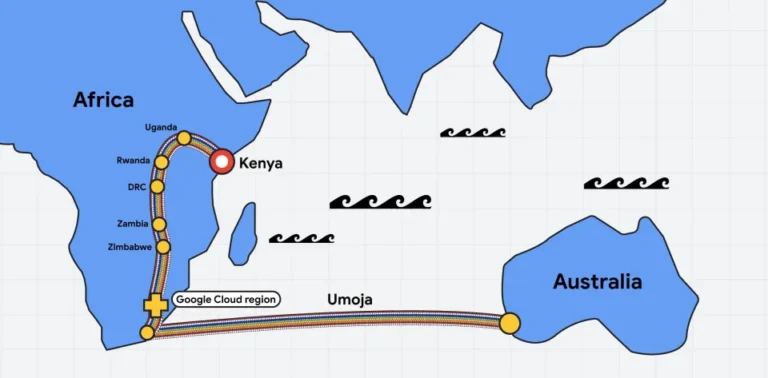Along its path, the Umoja project will offer access points to a number of additional African countries.
Google made the announcement on Thursday that it will construct a fiber optic connection that would connect Australia and Africa. One end of the cable will begin in Kenya and travel via Uganda, Rwanda, the Democratic Republic of the Congo, Zambia, Zimbabwe, and South Africa (with access points for each of these countries) before crossing the Indian Ocean and arriving in Australia. The cable will be named Umoja, which is a Swahili term that means “unity.”
Increasing digital connectivity, accelerating economic growth, and deepening resilience across Africa are the goals that Google has stated the project is intended to accomplish. In addition to the cable itself, the business has stated that it will collaborate with the government of Kenya to improve cybersecurity, data-driven innovation, digital upskilling, and the deployment of artificial intelligence in a responsible and safe manner.
Umoja will become a part of Equiano, a private undersea cable owned and operated by Google that will run between Portugal and South Africa (with intermittent stops in other countries).
According to Google, the new route is essential in order to increase the network’s resilience in the region, which has a tradition of experiencing “high-impact outages.” To put it another way, increased network redundancy reduces the severity of the impact that outages have on the internet infrastructure in the region.
“The new intercontinental fiber optic route will significantly enhance our global and regional digital infrastructure,” Kenyan President William Ruto wrote about the effort in a blog post that was published by Google. “This initiative is crucial in ensuring the redundancy and resilience of our region’s connectivity to the rest of the world, particularly in light of recent disruptions caused by cuts to sub-sea cables,” said the spokesperson for the organization. We are not only enhancing the stability of our digital infrastructure by strengthening our digital backbone, but we are also paving the way for expanded digital inclusiveness, innovation, and economic prospects for our people and enterprises.

